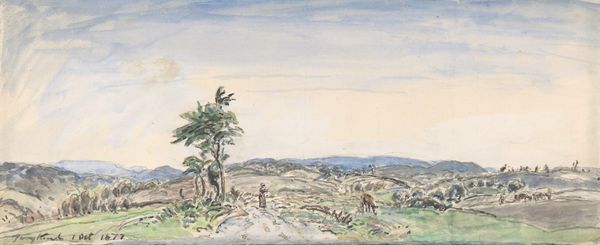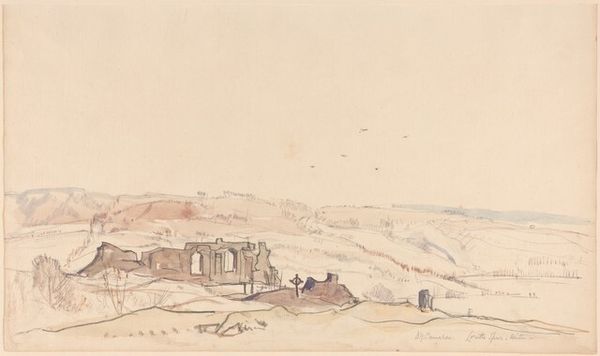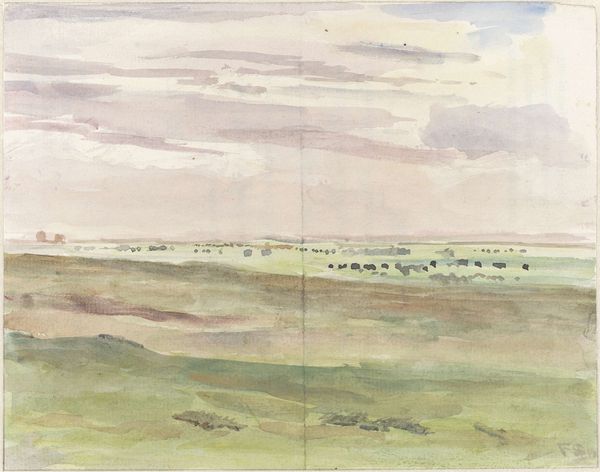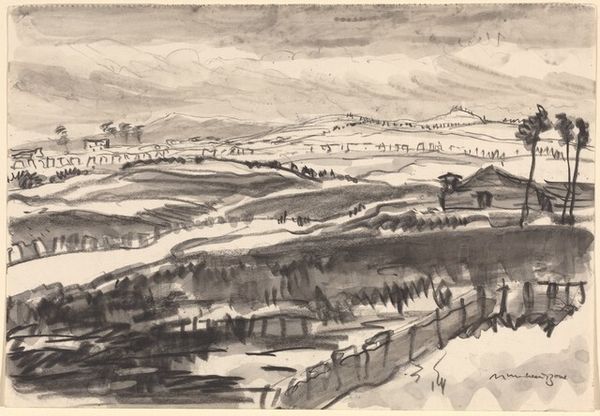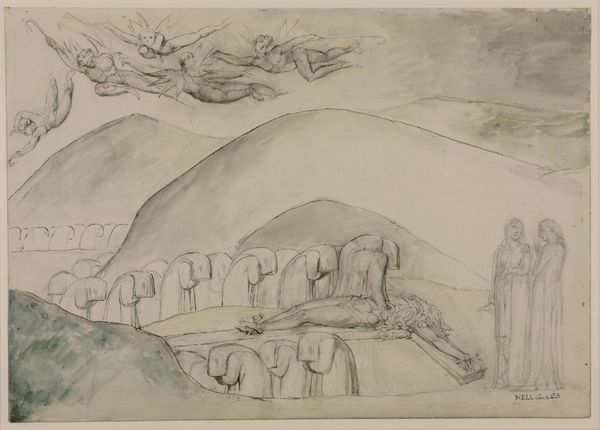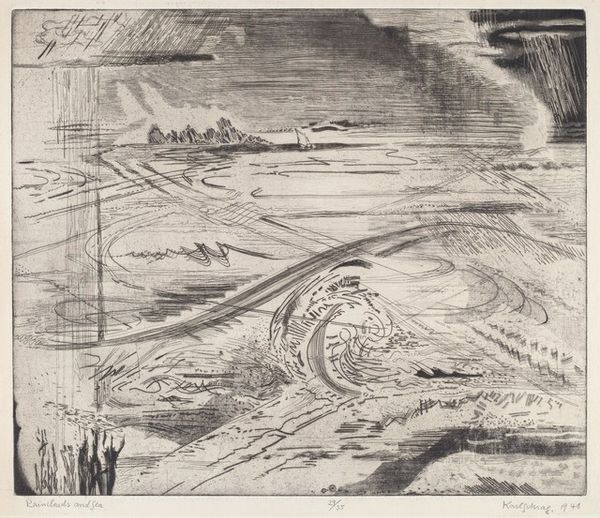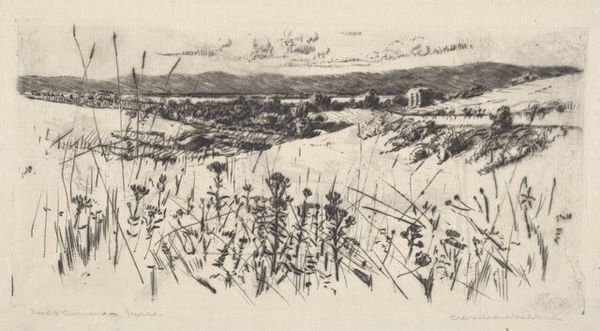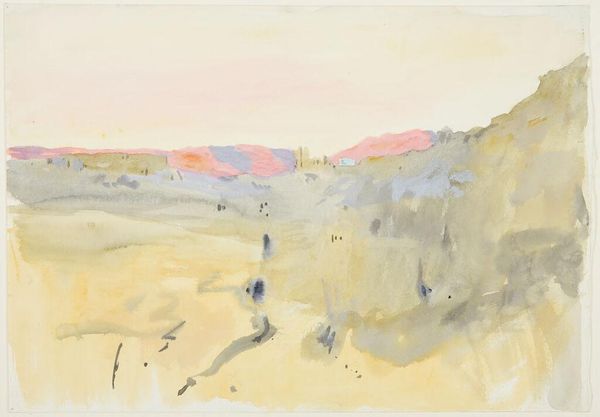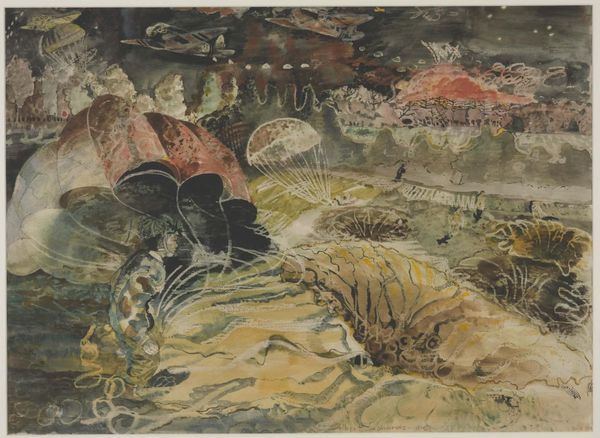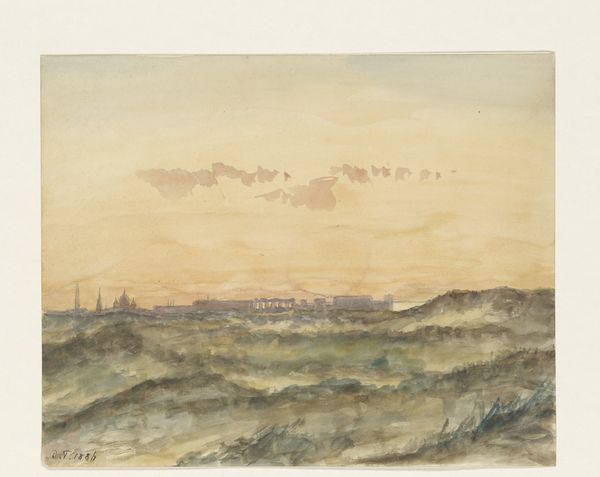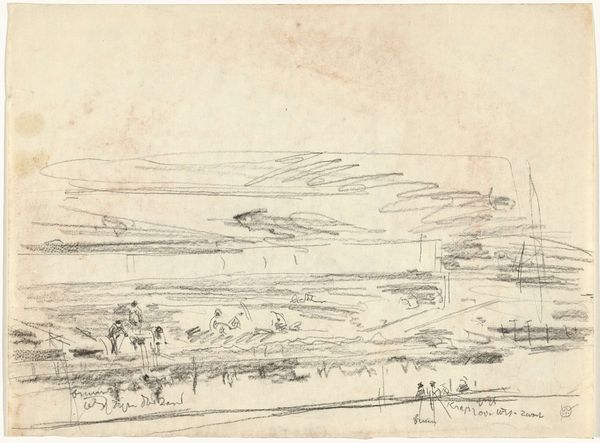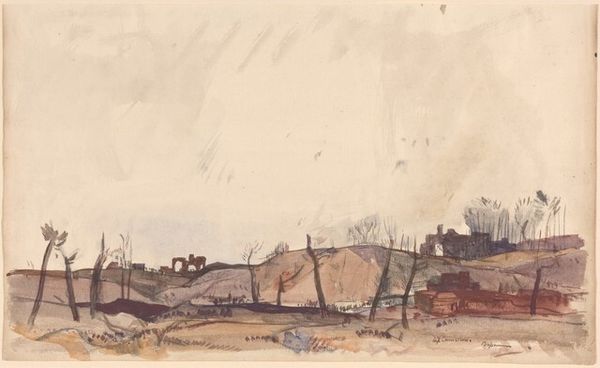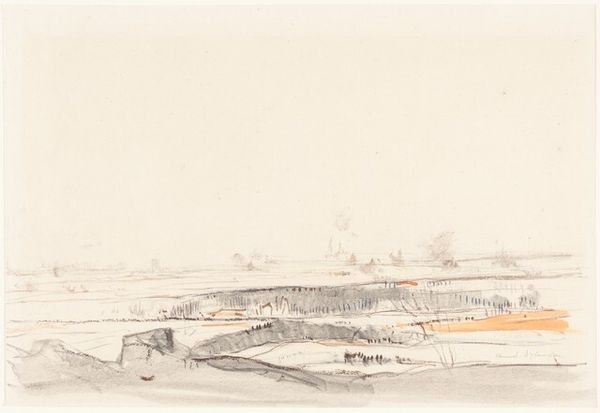
Dimensions: support: 394 x 578 mm
Copyright: CC-BY-NC-ND 4.0 DEED, Photo: Tate
Editor: This is Paul Nash’s "Bomber in the Corn," made with watercolour, pen and ink. There's a strange beauty amidst the wreckage, almost a serene quality despite the subject matter. What's your interpretation of this piece? Curator: Nash painted this during World War II, and it powerfully critiques the glorification of war. Consider the title: "Bomber in the Corn." It's a jarring juxtaposition, isn't it? The cornfield, a symbol of life and sustenance, violated by a machine of death. How does that make you feel? Editor: It’s unsettling. The broken aircraft contrast sharply with the peaceful landscape, a reminder of war's intrusion into everyday life. Curator: Precisely. Nash uses this image to highlight the destructive impact of war on both the physical landscape and the collective psyche. The public role of art becomes very important in times of conflict. Editor: I hadn't thought of it that way. Thanks for pointing out the cultural context. Curator: My pleasure! It is important to understand the politics of imagery.
Comments
tate 3 months ago
⋮
http://www.tate.org.uk/art/artworks/nash-bomber-in-the-corn-n05715
Join the conversation
Join millions of artists and users on Artera today and experience the ultimate creative platform.
tate 3 months ago
⋮
This is one of a series of six ‘Raiders’ begun in about August 1940 for the Air Ministry. Nash saw these watercolours as a continuation of his earlier work on the theme of ‘the monster in the field’, which in earlier incarnations consisted of strange misshapen tree trunks. Nash hoped his ‘Raiders’ would be published as war propaganda. This was never done. Nevertheless, the interruption of the machine here implies something a lot more threatening than a Surrealist juxtaposition of unlikely objects. Gallery label, August 2004
